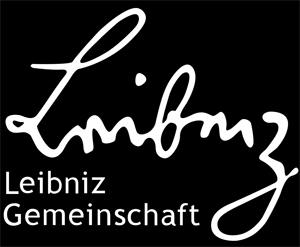At the beginning of this year, the IKZ began its long-term collaboration with the MATH+ cluster with one so-called "Incubator" project. "Incubator" projects, in this context, are one-year projects between Berlin mathematicians and partners from other scientific disciplines.
The current WIAS-IKZ project “IN-B3 - Understanding doping variations in silicon crystals”, which is located at the Weierstrass Institute for Applied Analysis and Stochastics (WIAS), deals with the question how to identify doping inhomogeneities. This topic is of the crucial importance for enhancement of the crystal growth. In order to find this out, the semiconductor crystal can be excited with a laser using the opto-electrical measuring method "Lateral Photo Voltage Scanning Method" (LPS), which generates a voltage difference at the sample edges that is proportional to the local change in doping concentration. The aim of the project is to make a digital twin out of the LPS method. The inflexible, commercial black box code is replaced by the open source software tool ddfermi. With the new simulation strategy, all three theoretical results from Tauc [1] have been qualitatively reproduced. The latest project results will be presented at the NUSOD 2020 (20th International Conference on Numerical Simulation of Optoelectronic Devices) from September 14-18, 2020 in Turin, Italy.
There is a great enthusiasm for the research in this area. The next project proposal entitled “Physics-informed and data-driven doping reconstruction in crystals” has already been submitted. The topic of the new project is to use artificial neural networks and suitable optimization techniques to understand the distribution of impurities in crystals. If granted, the project is expected to start in early 2021.
The Berlin Mathematics Research Center MATH+ is a cross-institutional and interdisciplinary cluster of excellence. The aim of the cluster is to research and develop new approaches in application-oriented mathematics. The focus here is on the mathematical foundations for the use of ever larger amounts of data in life- and materials science, in energy and network research, and in the humanities and social sciences.
The cluster MATH+ has been funded by the German Research Foundation (DFG) in January 2019. The current funding period is seven years. MATH + is a network of the Free University of Berlin, the Humboldt University of Berlin, the Technical University of Berlin, the Weierstrass Institute for Applied Analysis and Stochastics (WIAS) and the Zuse Institute Berlin (ZIB).
[1] J. Tauc, “The Theory of a Bulk Photovoltaic Phenomenon in Semiconductors,” Czech J Phy, vol. 5, pp. 178– 191, 1955.
Further information:
Natascha Dropka
Section Fundamental Description
![[Translate to English:]](/fileadmin/user_upload/News/2020_08_Simulated_charge_carrier_distribution_due_to_impurities.png)

